originally posted at https://canmom.tumblr.com/post/637136...
Chag chanukah semeach!
Today’s the first day of חֲנֻכָּה, usually transliterated as Hanukkah, Chanukah, or Hanukah - a Jewish holiday that’s like… afaiu, relatively low on the list in terms of “Important Jewish Holidays”, but over time became quite significant in America as a welcome alternative to that other winter holiday.
@mogsk had a great idea of making that the theme of Animation Night this week. So this week we’re going to look at some portrayals of Judaism in animation, which admittedly mostly don’t have to do with Hanukkah specifically because sadly there is not a great lot of choice there!
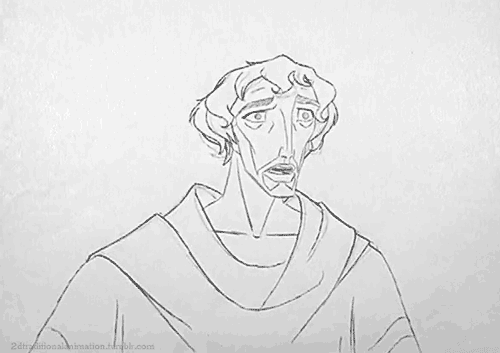
Our main feature will be The Prince of Egypt, one of the remarkable productions from that narrow window when Dreamworks was producing traditional animation before they hit their present CGI mould. And the narrowness of that window is honestly a tragedy, because Dreamworks made some absolutely beautiful traditional animation in their day. Like many of their films, Prince of Egypt shows off some cuts by one of my fave animators, James Baxter, who’s equally at home with subtle character animation and sweeping 3D camera movement…
More on Dreamworks, and Prince of Egypt, in a sec.
Dreamworks aren’t the only Disney expatriates we’re going to be checking out. Don Bluth, the horny one, directed a film called An American Tail in 1986, about a Jewish refugee mouse from Imperial Russia struggling to reunite with his family in America. It was panned by critics as ‘too depressing for kids’ so it’s probably up our street :p
To introduce it all, however, we’ll be looking at one of the only animated works to explicitly deal with celebrating Hanukkah: an episode of the TV series Rugrats, which (I’m advised!) is one of the best primers on the holiday - both the story behind the event, and what it’s like to celebrate it.

In case you were wondering… the lumpy-headed babies you’re seeing were designed by Peter Chung, the Aeon Flux guy. Per TVTropes Rugrats was one of the first three original cartoons by the network/studio Nickelodeon, and thus one of the first to break the trend of merchandise-driven cartoons. It wasn’t quite as experimental as its sister show Ren and Stimpy, but it’s better remembered than Doug (seriously wtf is Doug?), portraying a group of children playing in elaborate fantasy worlds.
A Rugrats Chanukah was the second time the show portrayed a Jewish holiday; the first one portrayed Passover. It was written by two Davids, J. David Stem and David Weiss; the first has almost no information beyond his screenwriting credits, but David Weiss had recently converted to Judaism which I suspect helps add some sincerity to the episode. In any case, mogs says it’s an uncannily accurate portrayal, and a good introduction to like… what the holiday actually is about, in terms of both the history behind it and the modern, personal meanings.
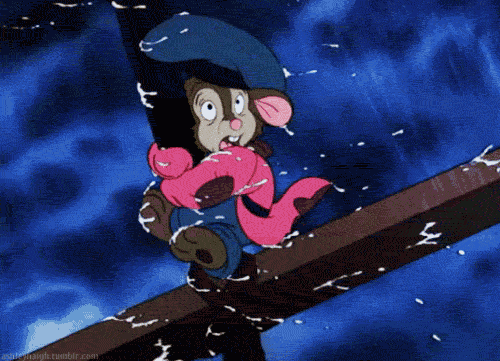
Following that, we have another Don Bluth film! We didn’t have time to talk much about him on animal suffering night, so let’s remedy that now. Don Bluth was first an animator from a Mormon family who got his start in the 50s, working as an assistant to John Lounsbery, one of Disney’s esteemed “Nine Old Men”. In the old Disney animation pipeline, assistant’s job is similar to an inbetweener in anime: they use the key drawings and timing charts of the main animator, and fill in all the frames with minimal changes. The typical career of a Disney animator would be to begin as an assistant and learn drawing and animation skills, and eventually get to do their own key animations down the line.
Bluth, however, left Disney for a number of years after Sleeping Beauty was released, first to go on a Mormon mission (a rite of passage that serves a cult-indoctrination function) and then to work with Filmation, returning to Disney in the 70s to work on some of their furrier films like Robin Hood and The Rescuers. But by 1979 he had become dissatisfied; he left Disney again along with eleven other animators including long-time collaborator Gary Goldman, aiming to bring back the ‘Golden Age’ animation style.
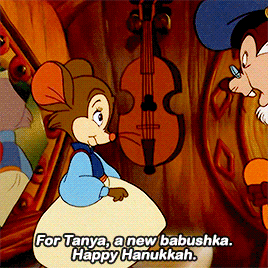
So Bluth became something of an animation auteur. His studio’s initial first film, The Secret of NIMH, met only modest success despite a few innovations like a profit-sharing contract. As we saw, the film had lavish animation that sometimes borders on outright over-animation, with flourishes on every movement. But with the small gross and an incoming animator’s strike, they went bankrupt… like twice or something? All these financial troubles did not stop Bluth’s studio from creating the unique FMV-based animated arcade game Dragon’s Lair, which is essentially a branching path made of quicktime events and clips of the main character dying to various traps.
After the second(?) bankruptcy, Bluth didn’t give up; he founded another animation studio with a businessman called Morris Sullivan, which set up shop in Ireland (where the winds were favourable for animation) as Sullivan-Bluth productions.
This brings us to his collaboration with Steven Spielberg, on An American Tail (1987) - which I think was the first time Spielberg worked in animation, in an Executive Producer role. (I’m never quite sure what the difference between (Executive) Producers and Directors is, but I think it means Bluth had the most creative control?) The film revolves around Fievel, who lives with a Jewish family in Ukraine, then part of the Russian Empire in 1885. This is not a world where furries exist in place of humans, but where a family of humans (the Moskowitzes) are host to a family of Mice (the Mousekowitzes), with the life of the mice paralleling that of the humans.
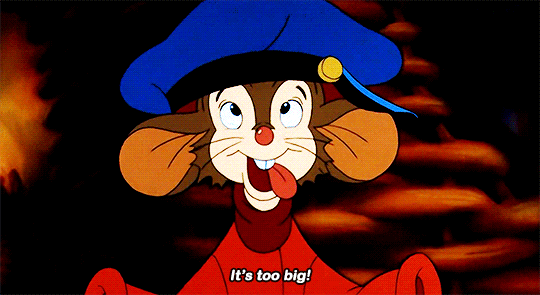
While celebrating Hanukkah (see! there’s your connection to the theme!), the human family survives an antisemitic arson attack by the Cossacks, paralleled by the mice surviving a similar attack by the cats. Their house destroyed, and fearing further pogroms, the mice resolve to flee to the USA. Fievel becomes separated from his family on the trip, who presume him dead. Unfortunately, hope of a cat (antisemitism)-free USA proves rather unfounded, and the migrant mice join the political struggle against the American cats. So the movie’s twin plots concern simultaneously Fievel’s attempts to reunite with his family, and highly metaphorised antifascist struggle.
This all sounds astonishingly grim for a kids’ movie, but hey, that’s what Spielberg sentimentality is for I guess? At the time, the film was criticised for lacking confidence and downplaying the Jewishness of the mouse family, to the point that it is possible to miss that the film’s inciting incident is specifically an antisemitic attack. But I guess we’ll judge that for ourselves!
Don Bluth is known for a number of peculiarities and blatant fetishes recurring visual motifs. Cats in his films are more like bears, squash and stretch is pushed to extremes, there’s a lot of tumbling and big open mouths with dangly uvulas and oh man, the transformation sequences. I mean just check this shit out:
As far as I know he doesn’t really indulge in these Bluth-isms in An American Tail, but idk, I’ve been wrong before. The film was, in any case, a massive success, briefly the most successful animated film; as were the next couple of Spielberg-backed animated films such as The Land Before Time (also Bluth) and Who Framed Roger Rabbit (with Richard Williams as the animation director). At some point however, Bluth split from Spielberg, who took the rights to make various dubious American Tail sequels…
Bluth had a pretty huge impact in his day. Jeffrey Katzenberg, who we’re about to meet (oh boy), saw that animated films could make a lot of money and kicked off Disney’s ‘renaissance’ period. But as TVTropes write, Bluth didn’t get to share in the ‘renaissance’. Many of his later films were released against Disney films, and massive box office failures, leading to tighter restrictions on Bluth’s work by his backers that, not surprisingly, resulted in very unsuccessful film. Bluth’s studio folded, and he went to Fox, giving one small window of success in another Russian-themed project, Anastasia, based on the mythology of one of the Romanov dynasty surviving the revolutions of 1917 - but his next film, Titan AE, a rather muddled scifi film which couldn’t find an audience, was another bomb and that was basically it for him.
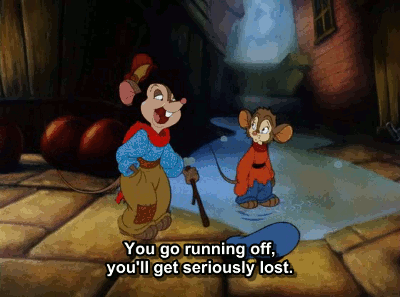
(it’s surprisingly hard to find gifs of this film, rather than the sequel. But this gif is p typical of Bluth style animation: the large gestures, flexible characters, highly contrasting painted backgrounds, water effects…)
Following that, we hit our other main feature: Dreamworks’s The Prince of Egypt. This film is an animated adaptation of the Exodus story, in which the Israelites, held in slavery in Egypt, are led to freedom by the prophet Moses with more than a little divine help. It’s not exactly directly relevant to Hanukkah, but there’s a joke that goes “every Jewish holiday can be summed up ‘they tried to kill us, we won, let’s eat!’”, and it definitely fits that template :p
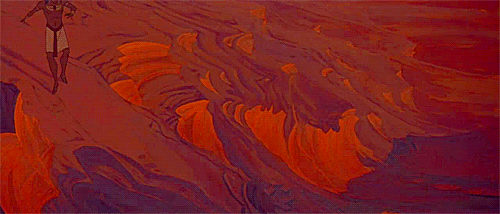
Much like Don Bluth’s studios, Dreamworks spun out of Disney. It was founded by Jeffrey Katzenberg, who had for a long time been Disney’s feature animation director - and I guess Katzenberg makes an interesting contrast with Bluth. Don Bluth was an animator, but fairly peripheral; he left the studio for the sake of pursuing more ambitious animation in a time when wallets were very tight but maintained pretty good relationships with many of his former colleagues. Katzenberg, by contrast, was more on the business side of things, and his departure from Disney was a lot more acrimonious.
Katzenberg became head of Disney’s feature animation department in 1984, at the same time that Michael Eisner (his prior boss at Paramount) became CEO of the studio. At this time, Disney was at a relatively low point - still the classic symbol of the psychic side of American imperialism, but hardly the depressingly omnipresent media monopoly it since became. Animation was unpopular, so the feature animation department was habitually cutting corners and not expecting to make a lot of money.
Katzenberg showed up and immediately started upsetting people, cutting 12 minutes from The Black Cauldron as his very first act. But under him, Disney found a new formula for animated films which would make them a truly stupid amount of money through the 90s. Their first couple of films under Katzenberg, Who Framed Roger Rabbit (1988, an experiment with Spielberg’s involvement in mixing live action with animation, also known for the animation work of Richard Williams), The Little Mermaid (1989), and Beauty and the Beast (1991, the year I was born!, featuring early use of CGI and some absolutely god tier James Baxter cuts) were relatively traditional: musicals based on fairy tales. But then, well, Robin Williams happened.
The first really big Katzenberg drama, as documented by Lindsay Ellis above, was his conflict with the actor Robin Williams, who provided the voice performances of the Genie in Aladdin - introducing a new template of animated film promoted on the basis of a celebrity voice, very much against Williams’s own wishes. The use of Williams’s name as the centre of the film’s marketing so upset the actor that he basically severed ties with the studio for decades, but apparently it worked, and made Disney absolute megabucks.
Katzenberg did a bunch of other stuff, including bringing Pixar into Disney, but relationships were already fraying. Katzenberg and Eisner tried to push a darker version of Toy Story, the ‘Black Friday’ reel, which almost resulted in the film being cancelled altogether. But relations between the two were also fraying: Eisner refused to promote Katzenberg to the President position he wanted after the incumbent Frank Wells died.
“Fuck you,” said Jeffrey. “If you all hate me so much, I’ll make my own animation studio!” Thus he founded Dreamworks, in 1994, with Spielberg’s support. I’m not sure how many other people left Disney with him - obviously Baxter, presumably some other great animators. Anyway…
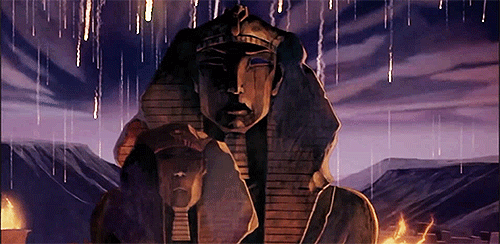
Nowadays Dreamworks is overwhelmingly known for making a lot of CG movies like Shrek; for a while they were derisively compared to Pixar in memes, but their reputation seems to be improving a bit in more recent years as people sour on the Mouse.
In their early years, though, Dreamworks focused on traditional animation, and their best work from this period is The Prince of Egypt (1998). I think it had already been the case that Disney animation had broadly been moving from a squashy, highly stylised approach to animation to somewhat more realistic human figures. But Prince of Egypt, wanting to treat the subject matter seriously, pushed it a lot further, with some really gorgeous elegant designs of characters like Moses at various ages and a great deal of spectacle. Despite the more complex designs, the animation is absolutely top notch, with all sorts of subtle character acting: Moses is brilliantly realised and imbued with personality at all his different ages.
And then well, the music! There are so many great songs: absolutely haunting pieces like Deliver Us (which opens the film) or the song of the plagues, but even the more comedic ones (the two Egyptian priests’ song You’re Playing With the Big Boys Now) don’t feel out of place. It’s not afraid to take some liberties to suit the arc of the story, but it nails the tone.
(Since I only have the English version to show tonight - here’s the Hebrew version of Deliver Us. With apologies for 240p. Do give it a listen!)
The film is of course much more concerned with conveying the emotional scope of the myth than like, historical accuracy: for example, the version of Egypt portrayed is building much grander architecture, at a greater pace, than in history. It’s a mythologised version of Egypt. But as far as that emotional scope goes, it delivers so much. It’s a really good example of the power Western-style ‘full’ animation could have, if it wasn’t so shackled to kids’ movies.
Dreamworks would continue to make a few traditionally animated films through the 90s. These aren’t all that well remembered, which seems a great shame - from the clips I’ve seen, they had some really great animation as well. Like check out this clip of Sinbad, which is uh, some kinda gay pirate movie?
In those couple of minutes we get to see detailed, anatomically-proportionate but still very expressive adult character designs, fluid, weighty motion with fantastically clean linework on every frame, some really well-choreographed action shots with complex camera motion and a ton of characters involved… the only thing that lets it down is the extremely dated looking CGI on the ships and water. It’s a good illustration of how animation can bring a kind of clarity and control over choreography which is very hard to reproduce in live action.
…and then it all ended after Spirit, because these films were incredibly expensive to produce and not especially successful, while meanwhile Shrek comes out and makes stupid amounts of money. So Katzenberg decided traditional animation was out, and Dreamworks would be a CG studio from there on. (Disney followed suit a few years later, after films like Atlantis and Treasure Planet also failed - one of the first animated films I obsessed over as a kid was Atlantis, which Disney fans tend to dismiss!). Hence: endless forgettable comedy films marketed on celebrity voices, the rise of posters with the one-eyebrow-raised ‘Dreamworks face’, etc. etc. (This took some really bizarre turns like the Bee Movie - between that and Shrek, Dreamworks has somehow become the big meme studio now.)

From that point on, American 2D animation would be heavily limited to TV, often heavily leaning on puppet animation in tools like Flash (now Adobe Animate), and almost always outsourcing most of the animation work to talented overseas studios like South Korea’s Studio Mir (the same people who made Wonderful Days, who should seriously be allowed to have more of their own creative direction instead of always providing services for Americans…) because they could be paid less than the American rate.
bluh bluh, sakuga purists going off on one again, yes - CG can be great! and of course I have to reckon with the fact that animation has always been beholden to capitalism, since it takes such a stupidly large amount of work; it’s rare for animators to get to create stories as we want without the question of ‘will it sell’ forcing certain decisions; the films animators like are not always the films people at large like. and so a big enough downturn basically killed half the medium in the west. thankfully anime is still going very strong for now, even if its actual animators aren’t seeing any of the money that the industry is raking in… but that’s another story! (art and social reproduction, coming soon to a long textpost near you)

anyway: I’ve been looking forward to the day we can check out early Dreamworks, since the studio’s later work tends to overshadow it and it’s a style of animation I respect quite a bit. (I just really like ‘full figure’ character animation with relatively realistic figures - though still stylised - which could be said to be losing out on the unique benefits of animation, but I just find this kind of drawing and animated acting really appealing. hence anime and, well, this particular era of American film animation when they tried making slightly more serious movies.)
There was actually a second Dreamworks animation of a story from the Torah, Joseph: Prince of Dreams, made direct to video but apparently not nearly as phoned0in as the average direct-to-video animated sequel. Though very much in the shadow of Prince of Egypt, I’m told it has gorgeous dream sequences that take after a Van Goph painting.
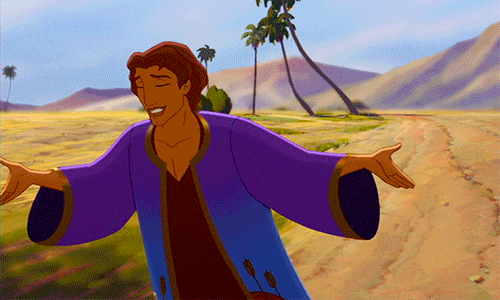
Given the runtime is just 74 minutes, I believe we will be able to slot that in before Prince and not overrun the whole night. in effect it functions as a kind of prequel: one film showing how the Jews arrived in Egypt on a hopeful note… and then PoE saying like “oh g-d, that is how it went? sorry joseph”.
so. with all that said…
happy hanukkah! I realise this post has mostly been about the animation industry rather than the background and context of the holiday itself, but that’s mostly because I don’t feel confident speaking on that. (I know these posts tend to present themselves as kind of authoritative, but honestly, I would love it if anyone ever felt like adding some details that happen to catch their special interest! with or without animation gifs!) Really grateful to @mogsk both proposing the topic and providing me recommendations, and I hope this post does them justice.
Animation Night 31 will begin in ~2 hours from posting at 7pm UK time, at the usual place of https://twitch.tv/canmom
(incidentally - yeah, an animation night will fall on the 24th in two weeks. I don’t intend to do anything specific to that other winter holiday as an incredibly meaningless and petty act of cultural spite, but I will probably keep things short since I suspect a lot of people have places to be on the 24th :p )
Comments